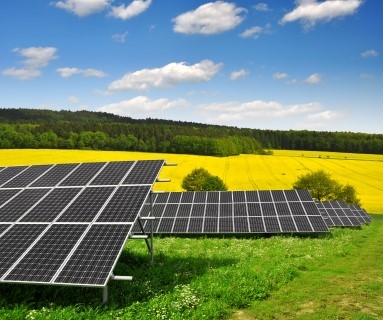
China to increasingly turn to floating solar farms
This is amidst concerns on declining land availability for solar projects.
China will emerge as a global driver of floating solar power growth over the coming decade, as land-concerns will see Chinese policymakers focus on deploying solar farms closer to coastal power demand hubs, particularly in the eastern provinces, according to BMI Research.
The ability of floating solar panels to prevent water evaporation will further boost the sector, given China's substantial amount of large-scale water reservoirs and hydropower facilities.
The multiple areas of application for floating solar facilities will ensure that a series of large-scale projects will be implemented in China over the coming decade.
Here's more from BMI Research:
Floating solar panels can reduce the usage of productive land, prevent the evaporation from water reservoirs in arid environments, and improve the efficiency of solar panels through water based cooling. These dynamics have already resulted in a flurry of activity in the floating solar sector, where water evaporation efforts have been driving progress in countries such as India, Brazil and the US, while land-usage concerns have become a key supportive factor for the deployment of the technology in countries such as the UK and Japan.
In China's case, we expect land-usage concerns to become a key driver of floating solar power growth over the next decade. The availability of land in inland provinces - such as Inner Mongolia, Qinghai, Xinjiang and Gansu - has helped make these regions outperformers in developing solar power capacity (in addition to high solar irradiation levels).
However, the lack of power demand inland, and limited power transmission capacity from these provinces to power demand centres along the east coast has meant that many solar farms in these regions have been idled.
We believe this will trigger the government to look to develop more capacity closer to power demand hubs, where the availability of land will become a more pressing challenge.
This will in turn warrant the development of more floating solar power facilities - in order to ensure large-scale solar farms do not take up valuable land along China's densely populated East Coast. As a pertinent example, a 200 megawatt (MW) floating solar farm was commissioned in Zhejiang Province on the east coast in February 2017.
Being situated on top of a fish farm, the floating solar facility will provide the fishery with about USD34mn (RMB240mn) a year by selling power to the grid, which reportedly means that the solar facility will pay for itself in about eight years.
This project showcases how floating solar power can compliment other water reservoir activities and create new sources of revenues, without taking up arable land.
Projects such as the one in Zhejiang will raise the attractiveness of floating solar power in China. The shift to building up more solar capacity in the east of the country is already in play, as the eastern provinces of Shandong and Henan (in addition to north-western Xinjiang) registered the most solar capacity growth in China over 2016 according to the Chinese National Energy Administration.
In the first three months of 2016, 1.3GW of floating solar projects were approved, whilst Anhui (neighbour to Zhejiang) aim to develop 3.2GW of floating solar power between 2016 and 2018.
Furthermore, we note that a 120MW floating solar facility was commissioned on another fish farm in Jiangxi province in 2016. Jiangsu, on the other hand, reportedly has 1 gigawatt (GW) of floating solar power installed, illustrating the appeal of this type of power generating facility.
We do stress that some of these installations will not be technically floating, but fixed on top of shallow water reservoirs. Nonetheless, the fact that these solar panels are situated on water supports greater efficiency through cooling. This cross-provincial push towards floating solar will add substantial momentum growth in the sector.























 Advertise
Advertise






